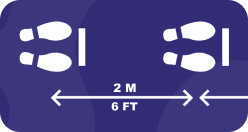Are you a high school student anxious about the labors and trials of admission season but hopeful about your college journey? In that case, you are likely in the thick of paperwork, college tours, consultations, and recommendation letter requests, facing multiple pivotal decisions. Should you apply? If so, where to apply? Will you be able to secure the financial aid fitting your budget? And, as if it all weren’t complicated enough, there is one more: when to apply?
All this can be panic-inducing. I know, I’ve been there. But I can promise you two things. One: this is not as frightening and complicated as it seems now. Two: it will all be all right – one way or another. Let me make it a bit easier by demystifying one of the most significant dilemmas you’ll face: Early Admission versus Regular Admission. By the time you finish reading this article, you’ll have a clearer picture of which approach is your ideal fit.
First of all, the early admission round has two significantly distinct options: Early Action and Early Decision. They are similar in that only a limited number of schools offer them. Out of more than 4,000 degree-granting institutions in the US, only about 450 colleges offer early admission options: Early Action, Early Decision, or both. Yet this tiny pool includes highly selective elite universities like Harvard, MIT, Yale, Dartmouth, Brown, etc. The deadlines for both Early Action and Early Decision usually fall on November 1. Other than that, they are very different.
Early Action
Early Action (EA) is an admissions option that allows you to apply to colleges early in your senior year, typically by November, and receive the school’s decision early – by mid to late December. You can apply to several schools under EA. This is not a binding or exclusive arrangement. You are not committed to attending the college if accepted and still have time until May to compare and consider all your options before making your final decision.
What are the benefits?
- Less stress: By applying early, you get a chance to receive your college acceptance letter earlier, ending all the anxiety and uncertainty. You are free to bring your mind back from the future to now and enjoy your last year of high school in the safety of knowing.
- Increased acceptance rates: Colleges often admit a higher percentage of students in their early action pool. For example, according to data for the class of 2027, Yale has accepted 10% of early round applications as opposed to 3.2% of regular round, while for Dartmouth, these numbers were 19% vs. 4.5%. However, this varies from school to school and from year to year. Higher acceptance rates are usually explained by a smaller pool of applications, where it’s easier to stand out, higher motivation and demonstrated interest among students who apply early, and overall great applications since early applicants tend to be academically strong and confident that they meet school’s standards.
- Flexibility: You can apply to multiple colleges through EA, increasing your chances of acceptance without being tied down to any institution. Moreover, in some cases, if you aren’t accepted in the early round, your application is deferred, meaning it will still compete in the regular round, and you’ll have another shot at getting in.
What are the downsides?
- Limited information: With EA, you might not have your best standardized test scores or the strongest grades on your transcript yet. Applying without your fullest and best achievements might not represent your true potential.
- Fewer scholarships: Many schools reserve their most significant merit-based scholarships for regular decision applicants.
- Limited time: The deadlines for EA applications come up quickly, meaning you have less time to craft the perfect essay and get all necessary recommendation letters. For example, on average, teachers take about two weeks to compose a strong recommendation letter. If you decide to apply early, you must act quickly and be very organized.
Who should apply Early Action?
Early Action is an excellent choice if you have a college or several colleges in mind that you’re excited about and want to increase your odds of acceptance without committing to attending. If you are a quick and productive paper writer who can complete your essay and supplements on a shorter deadline, have a consistently good academic record, and want to alleviate some application stress, EA could be the way to go.
Early Decision
Early Decision (ED) is similar to EA, with one significant distinction: it’s binding. If accepted via ED, you are committing to attend that institution. It’s serious: they make you sign the papers and everything. You can only apply to one school Early Decision. Some schools do allow you to submit applications to other schools under EA, but there is always only one ED school, and if accepted, you are bound to withdraw all the applications you’ve submitted to other schools.
As with EA, if you aren’t accepted, you can be either rejected with no chance to apply again this year or deferred – automatically included in the regular pool of candidates to compete again. It depends on a particular school’s policy, so make sure you learn it in detail before applying.
What are the benefits?
- Higher acceptance rates: ED applicants also tend to enjoy higher acceptance rates, mainly because they are showing a strong commitment to the college. The college knows without a doubt that it is the dream school and number one choice of the candidates. Other than that, the criteria for selection are the same. “We are looking for the same things whether you apply early decision, early action, or regular decision,” says Jared Pierce, Associate Director of Undergraduate Admission at Babson College.
- Peace of mind: ED relieves you from months of agonizing decisions and uncertainty. If you’re accepted into your top-choice school, your future is secure.
- More time to prepare: If accepted early, you have much more time than other students to make all the necessary preparations: getting a car, deciding whether to take a job, and figuring out the housing arrangements. By the way, many schools give priority in dorm and roommate selection to students accepted early. Early start is especially beneficial for international students, who will need a lot more preparatory work, such as visa application, medical insurance, immunization, trip planning, etc.
- ED II option: Some schools offer two deadlines for Early Decision. The application deadline for ED I is November 1, with decision notifications coming on December 15, while the deadline for ED II is January 15, with notifications coming by February 15. With ED II, you have more time to complete your application and improve your grades and test scores.
What are the downsides?
- Binding commitment: The most significant downside to ED is the binding agreement. If you are accepted but decide not to attend, you may face penalties, such as loss of deposit money or inability to apply to this school ever again. In some cases, the school can even reach out to other colleges to alert them that you are an unreliable candidate, thus hurting your chances of admission. The only way you can back out of the ED acceptance is a lack of financial ability if financial aid doesn’t work out. Still, you lose time, effort, and money you’ve already invested, so you must be 100% certain this school is right for you. “Everyone says you should fall in love with the place before you apply early decision,” says Joel Hart, senior associate dean of admissions at Pomona College.
- Limited flexibility: You can only apply ED to one school. If your dream school isn’t affordable or is a reach, ED might not be the best route.
- Reduced financial aid: Because the ED application process is binding, you might lose the opportunity to compare financial aid packages other colleges might offer you. You must be absolutely certain that you want to attend this school and can afford the tuition costs in case the need-based or merit-based financial aid package you get along with your acceptance letter is insufficient.
Who should apply Early Decision?
ED is a wise choice for those who are absolutely sure about their first-choice school and are deeply committed to attending. It’s often the path for those who have thoroughly researched their options, visited campuses, and feel confident in their decision. Moreover, you must be positive that your academic records and test scores are the best you can master and in line with the school’s typical class profile, while financial aid isn’t a major consideration.
Regular Decision
Regular Decision (RD) is the most common application route, with submission deadlines in January and responses in late March to early April. This option is non-binding, and you can apply to as many colleges as you can handle. However, don’t forget that you must prepare essays, write supplements, and pay application fees for each one or submit waivers, which is a lot of work.
What are the benefits?
- More time: With RD, you have more time to gather a comprehensive set of materials, including your best test scores, improved grades, extracurriculars, independent projects, and meticulously crafted essays.
- Multiple choices: You are not restricted to a single college and can compare your options once acceptance letters arrive from different schools.
- More financial aid options: Acceptance letters usually come with financial aid packages the school can offer you according to your demonstrated need. Moreover, FAFSA and various scholarship deadlines align generally with the RD timeline. Applying RD, you don’t have to decide before knowing your aid eligibility.
- Revised application: If you’ve been denied acceptance through EA or ED, you have the opportunity to improve your application before applying RD.
What are the downsides?
- The waiting game: You won’t know your fate until well into the spring. You’ll need to be patient while waiting for acceptance letters, which can be a nerve-wracking agony if you are an anxious person (speaking from experience here).
- Stiffer competition: RD typically sees the highest application volume, meaning the competition is fierce. No matter how great your application is, standing out among the larger pool of equally eligible candidates is harder.
Who should apply Regular Decision?
RD is the route for students who want to keep their options open, are continuing to improve their application materials, or are uncertain about which college to attend. If you need more time to make your final decision or have multiple colleges on your radar, RD is the ideal choice, especially when financial aid is a big consideration in your college decision.
The takeaway
So, what’s the perfect choice for you? There is no one clear-cut answer. If you are confident in your top choice and excited about early acceptance, but financial aid availability is of importance, consider Early Action. If you have an unwavering commitment to a college and are confident you can afford it, Early Decision is created for you. On the other hand, if you’re still exploring your options, need time to fine-tune your application, or are unsure about which school will offer you a better financial aid package, Regular Decision should be your choice.
Whichever route you choose, know that there are no wrong answers. You will find your perfect match, and when that acceptance letter arrives and your heart skips a bit, you will know that you’ve done everything right, and your reward is an exciting college journey ahead. So, relax, take a deep breath, and tackle those applications with confidence because your future is looking bright! Good luck a oodles of acceptance letters!










